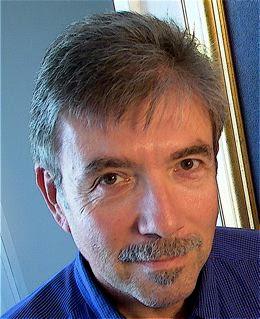THE STORY
In the Spring of 1964 I had the opportunity as an 18-year-old sophomore at Hampden-Sydney College to present to Attorney General Robert Kennedy a portrait I had painted of his brother, the President.
The event was recorded on 8mm film that has subsequently been transferred to DVD. At least two of the principals at the presentation, other than me, are still alive – Mrs. Ethel Kennedy and William Vanden Heuvel, Robert Kennedy’s aide. The painting, according to Mr. Kennedy, was to be given to the proposed Kennedy Library. That never happened because of events both known and shrouded in mystery. My hope is to locate the painting and see that it finds a suitable home and is protected.
The more complete story of the presentation appears below:
It broke my heart when President Kennedy was murdered. I still remember how I felt on November 22, 1963, during my sophomore year at Hampden-Sydney College. Back home in Richmond, Virginia over Christmas break, I filled my emptiness and despair by painting a portrait of the President.
I painted out my tears.
The following Spring Hampden-Sydney President Taylor Reveley stopped me on campus and told me that Attorney General Robert Kennedy was making a trip to Prince Edward County to accept pennies school children had collected for the yet-to-be-built Kennedy Library. “I’d like to get him to the campus to address the student body, and I wonder if you would be willing to give him your painting?” Dr. Reveley asked. I was thrilled that I would have the chance to meet the President’s brother. “Absolutely, I’ll do it!”
Dr. Reveley phoned the Attorney General’s office. Yes. Robert Kennedy would gladly accept the painting.
It was May 11, 1964 — secret service men combed the campus. At last, amid the squirrels and 200-year-old oaks, the whir of helicopter blades began cutting the fragrant air, announcing Mr. Kennedy’s arrival. After landing, the Attorney General briskly strode to Middlecourt, the President’s House, then back down the steps, toward Johns Auditorium where he was to deliver his talk.
Hampden-Sydney students were a mostly conservative bunch and began to grumble when the Attorney General stepped up to the lectern. Sensing that he was in enemy territory, Mr. Kennedy took off his jacket, rolled up his sleeves, put aside his prepared remarks, and said, “I believe you gentlemen may have a few questions”, whereupon he proceeded to field queries from the audience for forty-five minutes. With a combination of grace, courage, candor and humor, he won over the assembly, to receive a lengthy standing ovation.
After his talk, he and Mrs. Kennedy (Ethel) made their way to the spot where I was standing - waiting, nervous - my painting in front of me. As he approached, he looked directly at me and reached for my right hand. He said, “Very nice, very nice." I was thrilled. Then I heard someone say, “Could you let us take a few pictures?” There we stood, Bobby Kennedy and I, both holding the painting I had done. Mrs. Kennedy was smiling, asking me questions about Hampden-Sydney and my schoolwork. I hope I said something intelligible. My life felt complete. Soon they boarded the helicopter and took the painting back to Washington. In a few weeks, Mr. Kennedy sent me a prompt and personal thank you note.
When my portrait of President Kennedy left my guardianship, I felt reassured it would have a fortunate history. In our brief conversation, Mr. Kennedy told me he envisioned a section for commemorative artwork in the yet-to-be constructed Kennedy Library, and he would see to it that my painting found a home there.
After Bobby Kennedy’s murder in June of 1968, I wasn’t so sure. I knew his intentions about everything were no longer operative, but my life was busy, and I put thoughts about the painting away. Early in 1994, curiosity won out, and I began an inquiry to see if I could determine what had happened to the portrait.
First I called the Kennedy Library and spoke with Dave Powers, President Kennedy’s old friend and special assistant, the chief curator. We had a pleasant chat, but he told me he knew nothing of the painting. He suggested that I contact Ethel Kennedy to see if she could shed any light on its whereabouts. I wrote Mrs. Kennedy, and I also called my old Harvard grad school chum Doris Kearns Goodwin to get her suggestions. She proposed that I write Congressman Joe Kennedy. Early in November 1995, I received a warm reply from Congressman Kennedy telling me he had spoken to his mother and Frank Rigg, by then the Museum Curator, and could learn nothing helpful. At the end of his letter, he appended a handwritten note:
“Louis - Many thanks for the beautiful painting. As I am sure you may understand, those were very turbulent times and many, many things and remembrances have been lost or stolen. But the spirit of your work and theirs goes on. Many thanks, Joe”
“Lost or Stolen” — those words intrigue me.
Someone, somewhere, knows the secret. The painting has had its journey and I suspect has an interesting tale to tell. Whatever the answer, I made a deal over a handshake one spring day in 1964 to let Robert Kennedy become the caretaker of my painting. Just as he was unable to safeguard himself or his legacy, he was unable to protect my painting, as he had hoped. I made the deal that day to let go, and all the love and effort and tears that went into the painting went along with it, indelibly couched in the paint.

